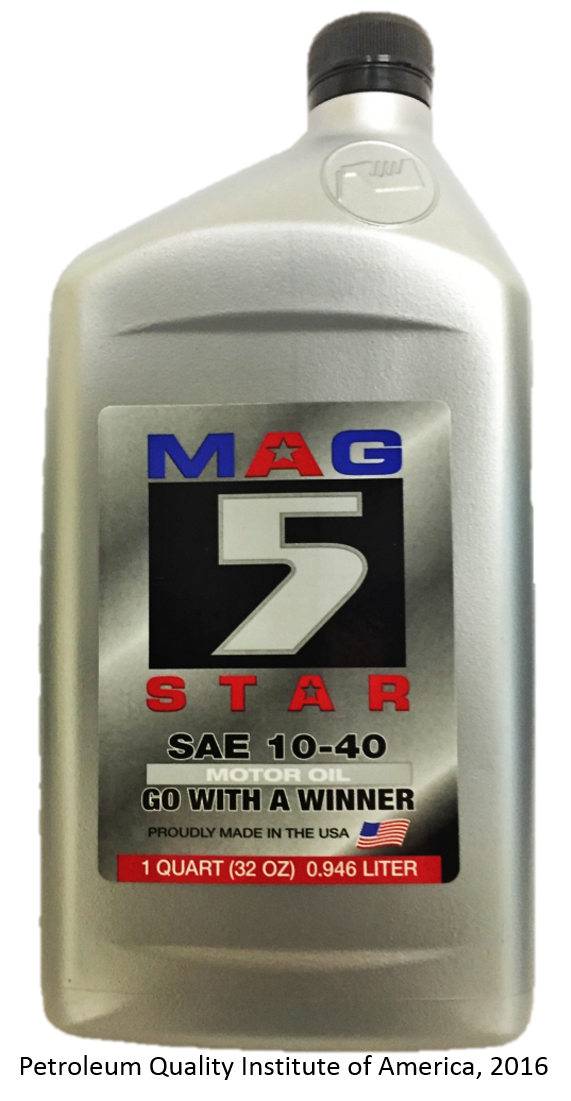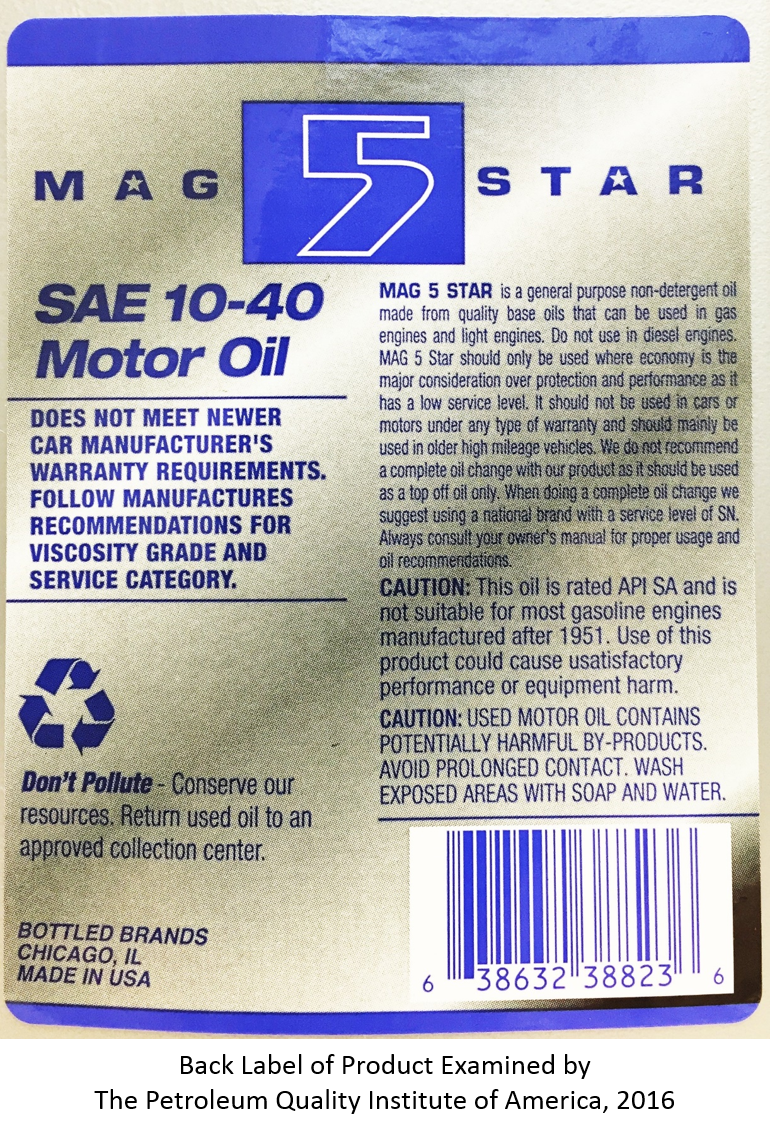

The Data Speak for Itself...

Click above for larger image

Click above for larger image
Corporate Office:
Bottled Brands
Chicago, IL
Website(s): No Website Found
The Petroleum Quality Institute of America (PQIA) is an independent resource for information and insights on the quality of lubricants in the marketplace. Our mission is to serve the consumer of lubricants by randomly sampling and independently testing lubricants taken from the field. Test results are posted along with the brand names on the PQIA website. This webpage provides an analysis on the brand detailed below.
The following are the test results for the sample examined.
Marketed By: Bottled Brands, Chicago, IL
Purchased at: Bellwood, IL
Date of purchase: 2/17/2016
Website(s): No Website Found
![]()
The results of the tests conducted on this sample do NOT meet the SAE J300 specifications for the SAE Viscosity Grade listed on the product label, and are NOT consistent with the referenced American Petroleum Institute (API) Service Category. The Kinematic Viscosity @ 100°C is lower than the minimum viscosity specification for this SAE grade and the Low-Temperature Cranking Viscosity is 22% higher than the maximum viscosity specification for this SAE grade. The organometallic additive levels in this sample indicate the product is NOT suitable for use in the majority of automobile engines currently on the road, and use of this product in modern automobile engines may cause harm to the engine.
Adding to PQIA's concerns is the claim that this is a multigrade SAE 10-40 motor oil that is "rated API SA and is not suitable for most gasoline engines manufactured after 1951." By definition, API SA motor oils are straight mineral oils that contain no additives, and therefore cannot be multi-viscosity grade products; the terms API SA and multigrade are mutually exclusive. Furthermore, the API states that SA oils are not suitable for most gasoline engines manufactured after 1930 (not 1951 as shown on the product on the label).
 |
Physical Properties |  |
| Elemental Analysis |  |
|
| Labeling |  |
Note: Although laboratory tests alone cannot be used to establish if engine oil meets an API Service Category, they can be used to determine if it doesn't.
| PHYSICAL TESTS (click for test details) - a | Standard | MAG 5 STAR |
| TBN, mg KOH/g (ASTM D2896) | 0.52 | |
| Viscosity @ 100ºC, cSt (ASTM D445) | 12.5 to <16.3 |
|
| Viscosity @40ºC, cSt (ASTM D445) | 65.7 | |
| Viscosity Index (ASTM D2270) | 175 | |
| Viscosity @-25ºC mPa s (cP) (ASTM D5293) | 7,000 Max |
|
| ELEMENTAL ANALYSIS (click for test details) - a, b | ||
| Additives | ||
| Calcium | 30 | |
| Magnesium | 3 | |
| Phosphorus, ppm | 49 | |
| Zinc, ppm | 13 | |
| Molybdenum, ppm | 0 | |
| Barium, ppm | 1 | |
| Boron, ppm | 3 | |
| Silicon, ppm | 5 | |
| Potassium, ppm | 30 | |
| Manganese, ppm | 0 | |
| Titanium, ppm | 0 | |
| Copper, ppm | 0 | |
| Sodium, ppm | 7 | |
| Vanadium, ppm | 0 | |
| Contaminants | ||
| Silver, ppm | 0 | |
| Aluminum, ppm | 1 | |
| Chromium, ppm | 0 | |
| Iron, ppm | 7 | |
| Nickel, ppm | 0 | |
| Lead, ppm | 0 | |
| Antimony, ppm | 0 | |
| Tin, ppm | 0 | |
|
||

